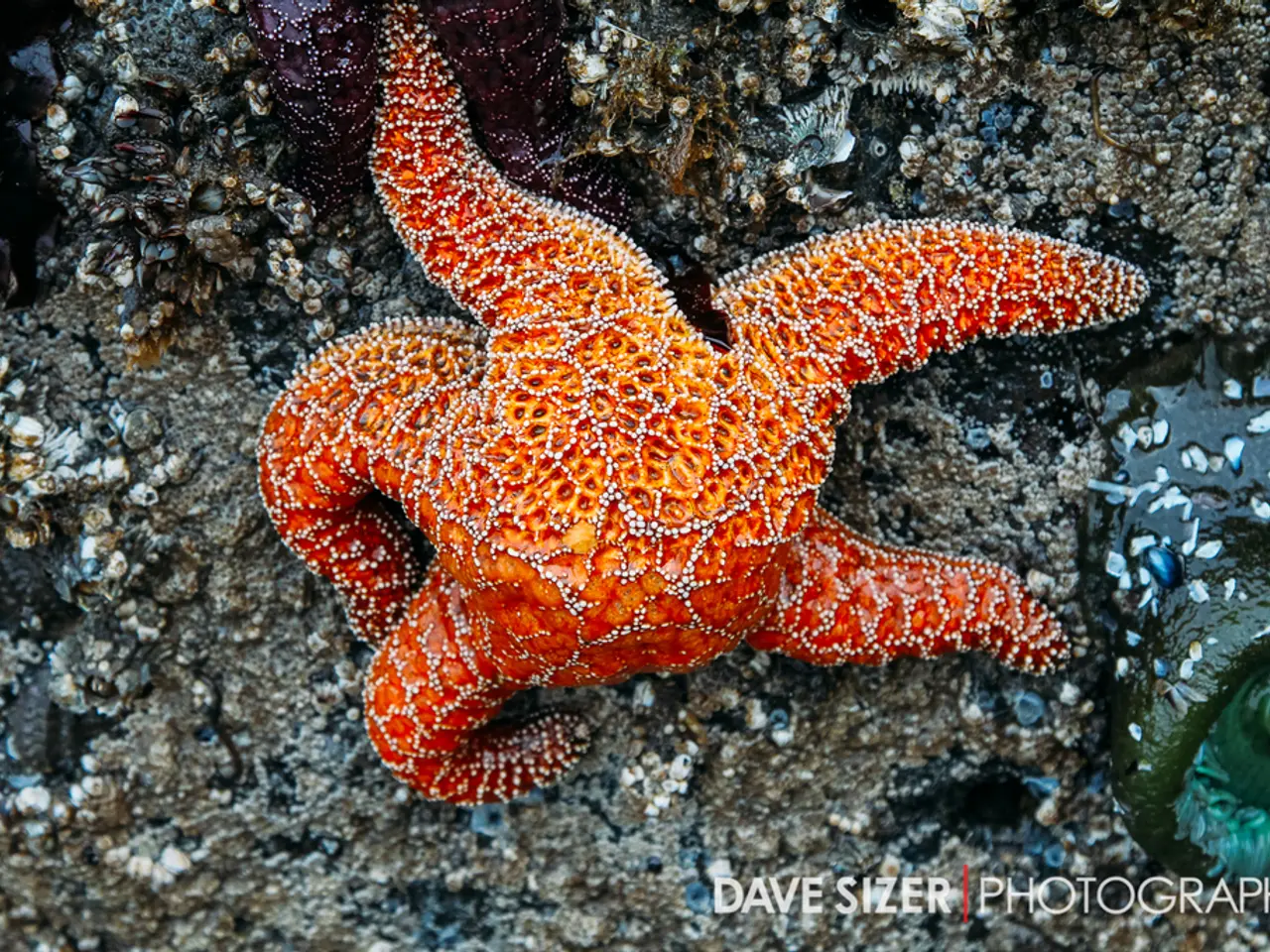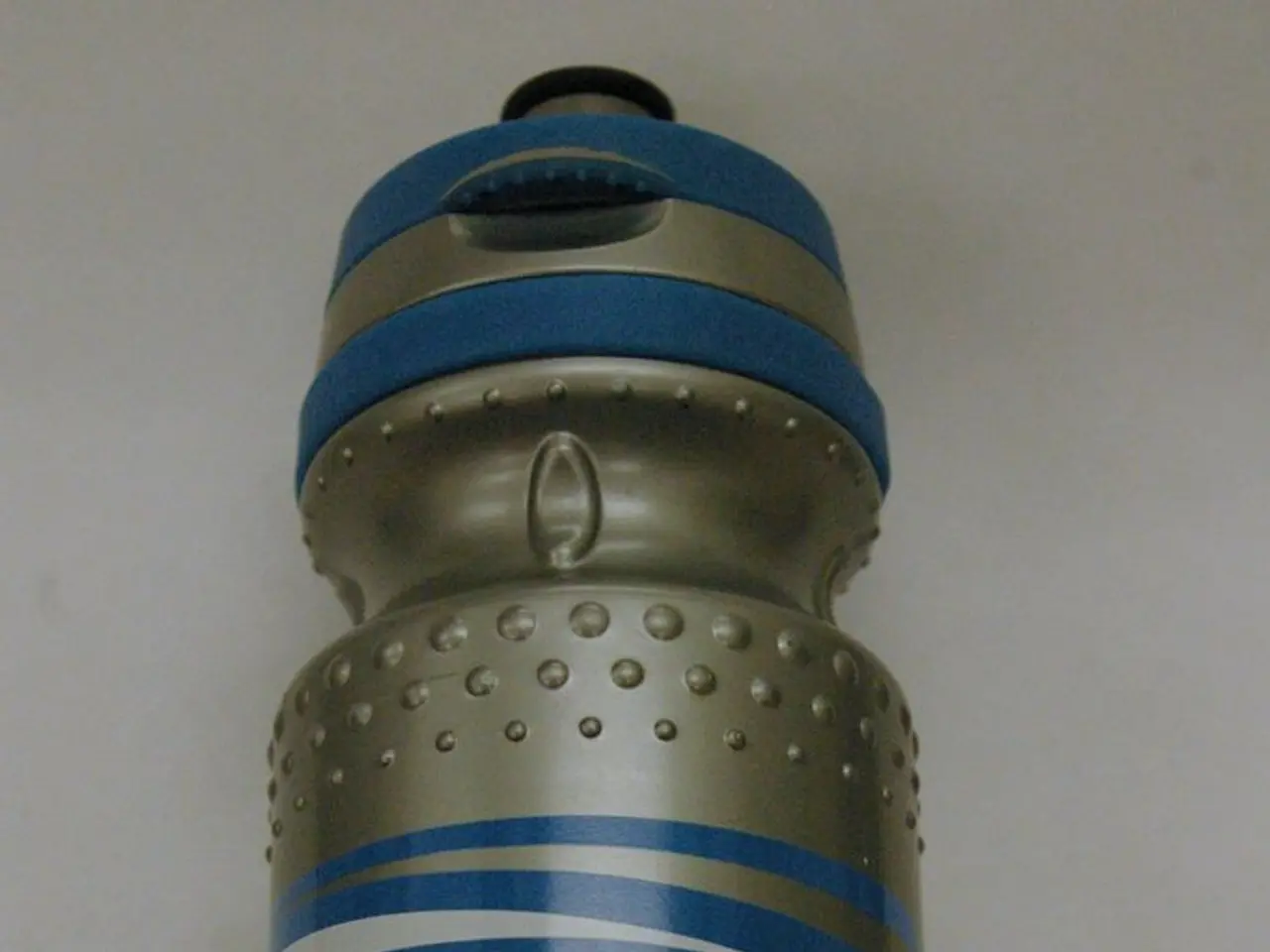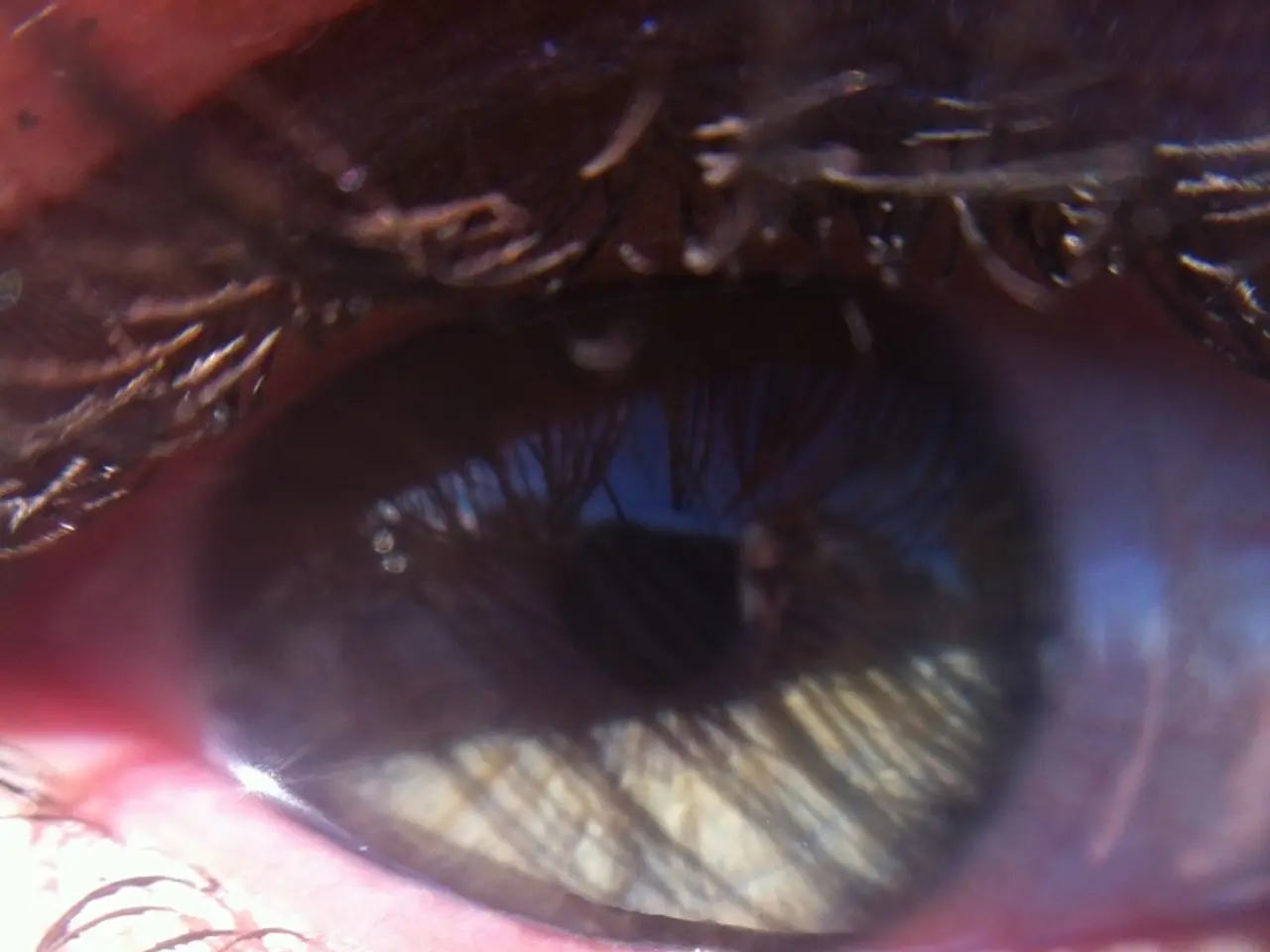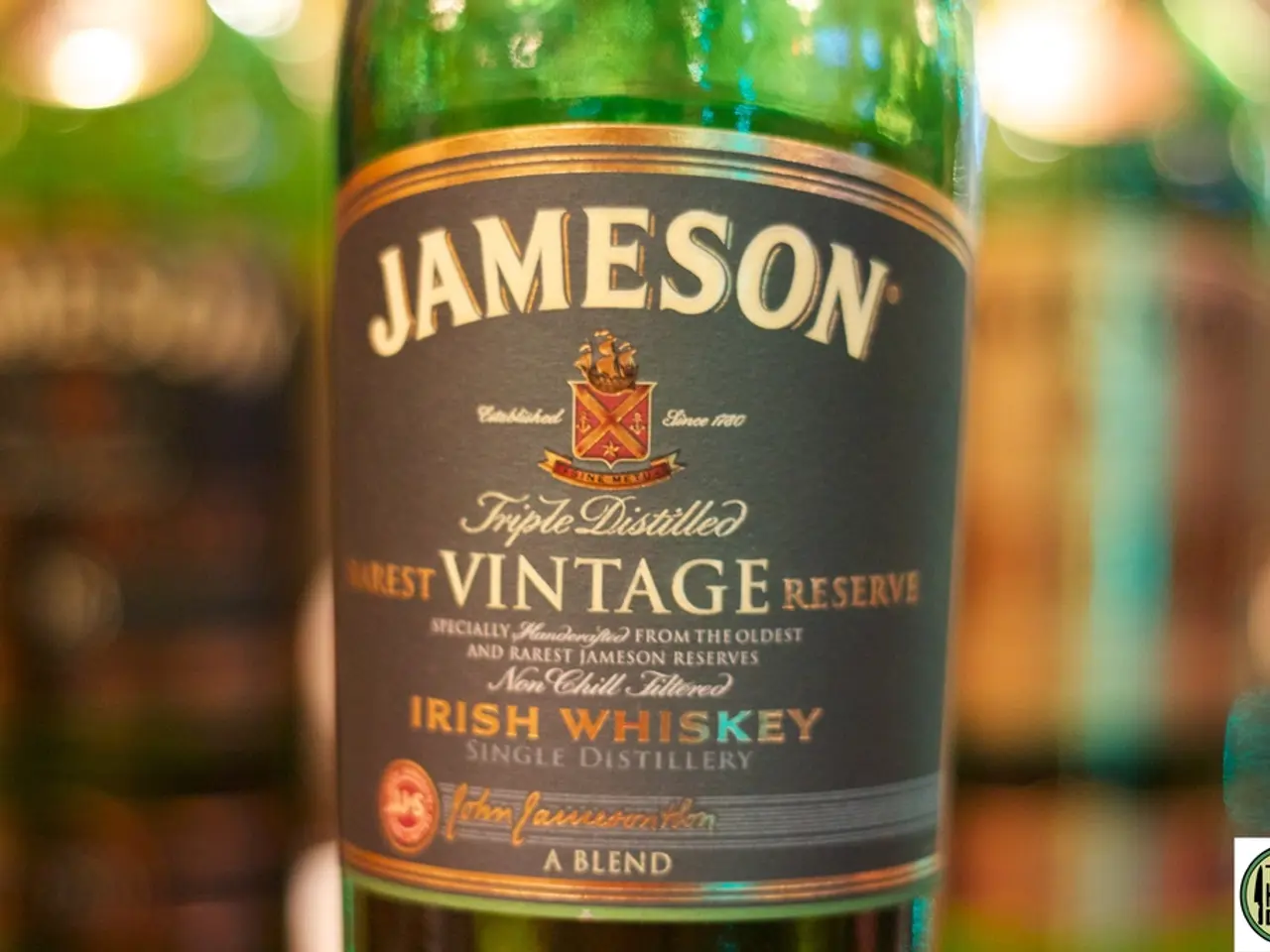Uncovered, the bacteria responsible for the catastrophic sea star epidemic
In a groundbreaking discovery that solves a long-standing mystery, scientists have identified the cause of the sea star wasting disease that has devastated populations of these marine creatures along the Pacific coast of North America since 2013. The bacterium Vibrio pectenicida has been pinpointed as the culprit, according to a study published in the journal Nature Ecology and Evolution.
The disease, which causes sea stars to develop lesions and lose their arms, has been particularly devastating to the sunflower sea star species, with around 90% of its population lost in the first five years of the outbreak. Over 20 species of sea stars have been affected, leading to a mass die-off that has had far-reaching consequences for Pacific ecosystems.
Healthy sea stars play a crucial role in controlling the population of sea urchins, which thrive in the absence of their natural predators. With fewer sea stars, sea urchin populations have exploded, leading to the loss of around 95% of kelp forests in Northern California within a decade. Kelp forests provide food and habitat for a wide variety of animals, including fish, sea otters, and seals, and are often compared to the "rainforests of the ocean."
Researchers studying tissue samples of dead sea stars initially missed the real cause of the disease because they did not contain the bodily fluid that surrounds the organs. The latest study analyzed the coelomic fluid of sea stars and found Vibrio pectenicida.
With the identified cause of the sea star wasting disease, scientists now have a better chance to intervene and help sea stars. Several interventions are being considered to aid in the recovery of sea star populations:
- Testing for Resistance: Scientists plan to test wild sea star populations for resistance to the disease. This could help identify individuals that are more resilient and suitable for breeding programs.
- Breeding and Reintroduction: Healthy sea stars will be bred in labs and reintroduced to areas where populations have collapsed. This approach aims to restore affected ecosystems.
- Environmental Factors Study: Researchers are interested in studying how climate factors, such as warmer waters during marine heatwaves, affect the disease's spread and severity. This knowledge can inform long-term recovery strategies.
- Probiotics and Other Treatments: There is interest in using probiotics or therapies like phage therapy to support sea star health and recovery. These treatments could be applied to individuals or ecosystems.
- Refuges Identification: Identifying marine refuges, such as colder ocean areas, could provide safe habitats for sea stars during outbreaks.
- Field and Lab Experiments: The confirmed cause allows for culture-based lab experiments to screen for the pathogen in the field, enabling targeted interventions and better planning.
Researchers hope the new findings will allow them to restore sea star populations and regrow the kelp forests, which are compared to the "rainforests of the ocean." Some researchers are also investigating if some sea star populations have natural immunity and if treatments like probiotics could boost immunity to the disease. The future of these vital marine ecosystems may be on the path to recovery.
[1] Hutcheson, C., et al. (2021). Identification of the causative agent of sea star wasting disease. Nature Ecology & Evolution. [2] Cunningham, S. A., et al. (2021). Identification of a causative agent of sea star wasting disease. Science.
- The identification of the pathogen Vibrio pectenicida as the cause of the sea star wasting disease opens up opportunities for interventions in health and wellness that could help sea stars recover, ultimately aiding in the restoration of healthier ecosystems and the preservation of biodiversity.
- In the pursuit of restoring sea star populations, environmental science plays a crucial role in understanding factors such as ocean temperatures, marine heatwaves, and refuges that might impact the spread and severity of the disease, guiding long-term recovery strategies and providing safe habitats.
- As a result of this groundbreaking discovery, the intersection of medical-conditions research, environmental science, and health-and-wellness initiatives has emerged as a significant area of focus for researchers, who aim to enhance sea star immunity using probiotics and other treatments, with the hope of boosting their resilience to environmental challenges.




